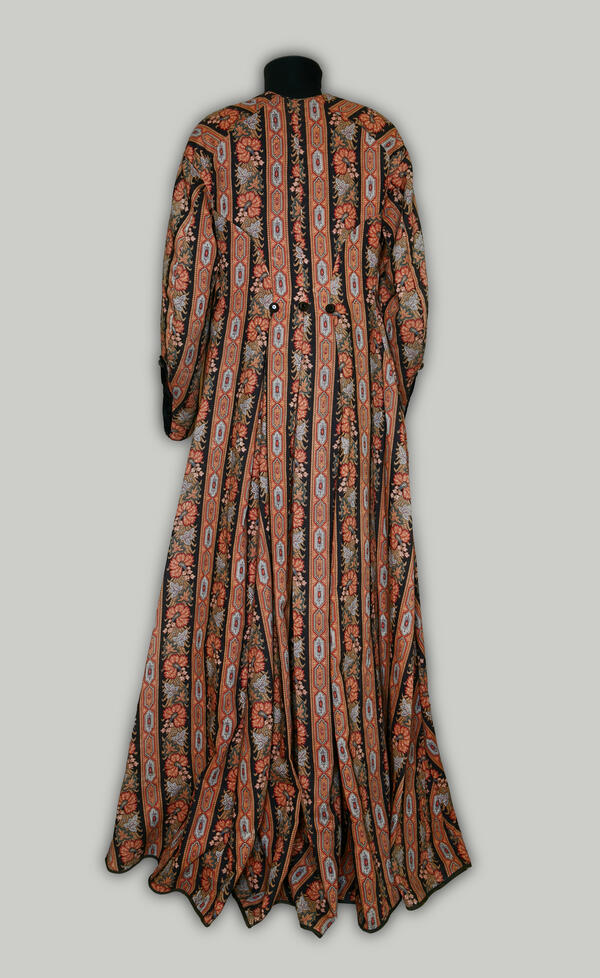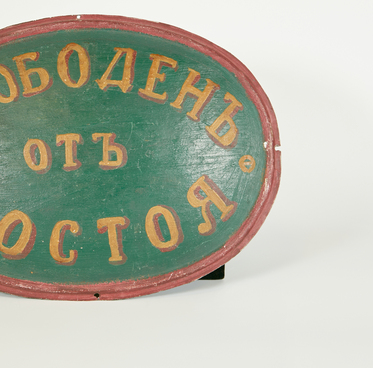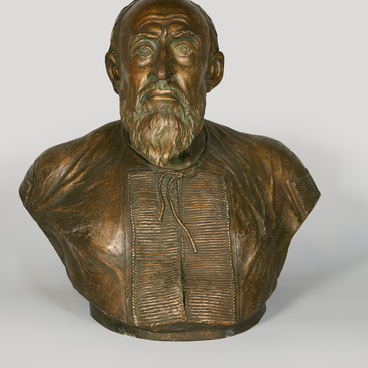The dressing gown, or schlafrock, kept in the Museum of Moscow, was made in the 1870s–1880s. It is made of wool with wide stripes of floral and geometric ornaments in black and terracotta tones. It is floor-length and has 17 buttons made of black velvet.
By decree of Peter I in January 1700, all boyars, nobles and officials were required to replace national Russian attire with fashionable European dresses. German and French outfits served as references. Men wore culottes, a doublet, stockings, a jabot collar, and at home they were obliged to wear a dressing gown, or a schlafrock, which was sewn from silk, satin, and velvet.
A schlafrock is an ankle-length robe with quilted cuffs and collar, without buttons, with a wide fold and pockets. Men wore it with a fez hat and slippers with open backs. The dressing gown was tightened with a twisted cord with tassels at the end, was comfortable, warm, and loved by many. These roomy clothes were used by both men and women. In this “ceremonial negligee”, smart-looking men received guests at home who arrived for an informal visit. According to the rules of good manners, women were allowed to appear in public in dressing gowns only in the morning, doing household chores.
Mentions of this type of clothing are often found in literary works of Russian writers. Ilya Ilyich Oblomov from Ivan Goncharov’s novel walked around in a dressing gown. In Ivan Turgenev’s story “Two Landowners”, one of the characters did not ever take off his robe. A schlafrock is mentioned in “Eugene Onegin” and “The Blizzard” by Alexander Pushkin. The newspaper “Rumor” in 1832 recommended fashionistas to sew dressing gowns from ladies’ Turkish shawls. In “The Brothers Karamazov” by Fyodor Dostoevsky, Ms. Khokhlakova wears a homemade dressing gown with a black shawl and shoes.




